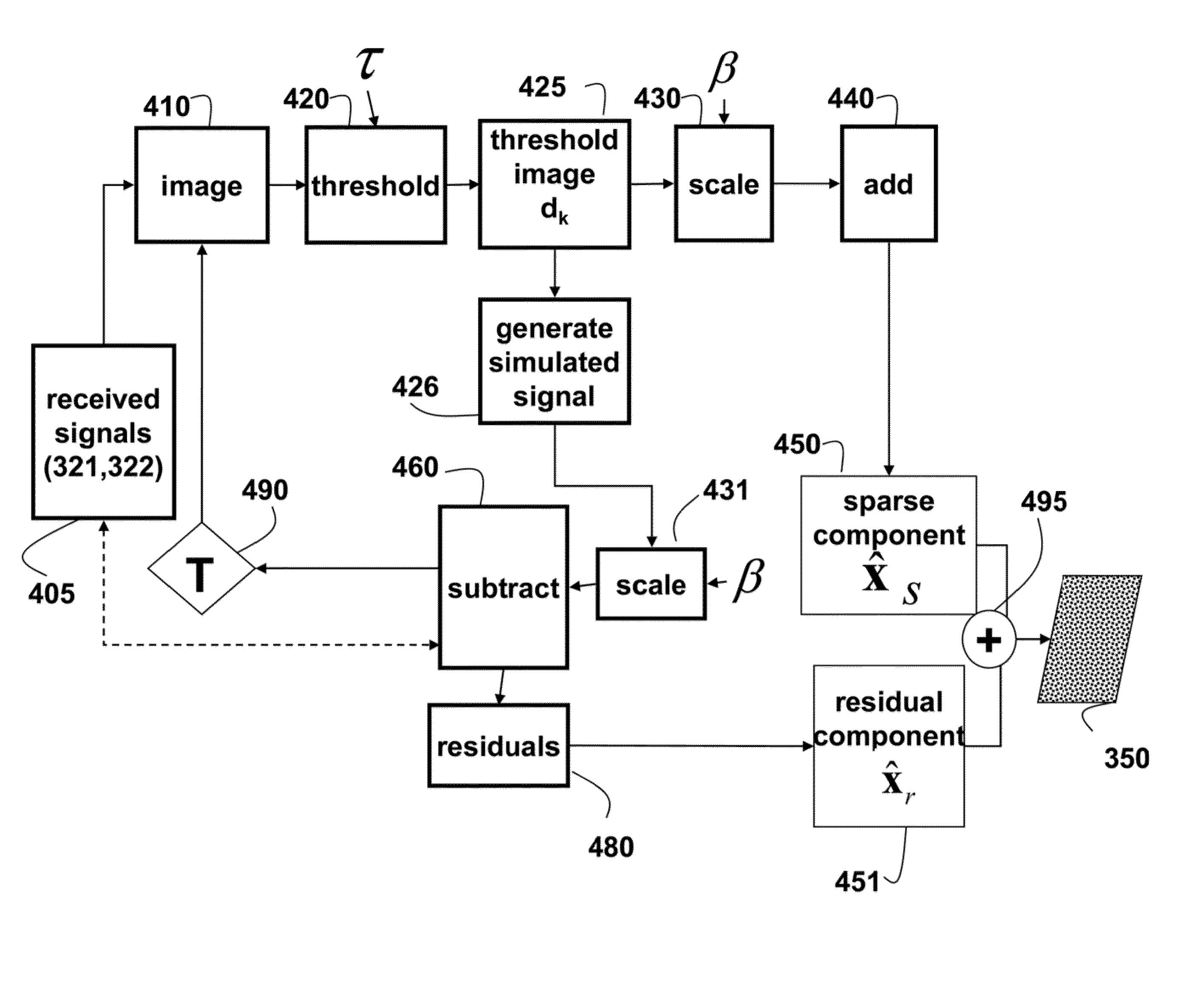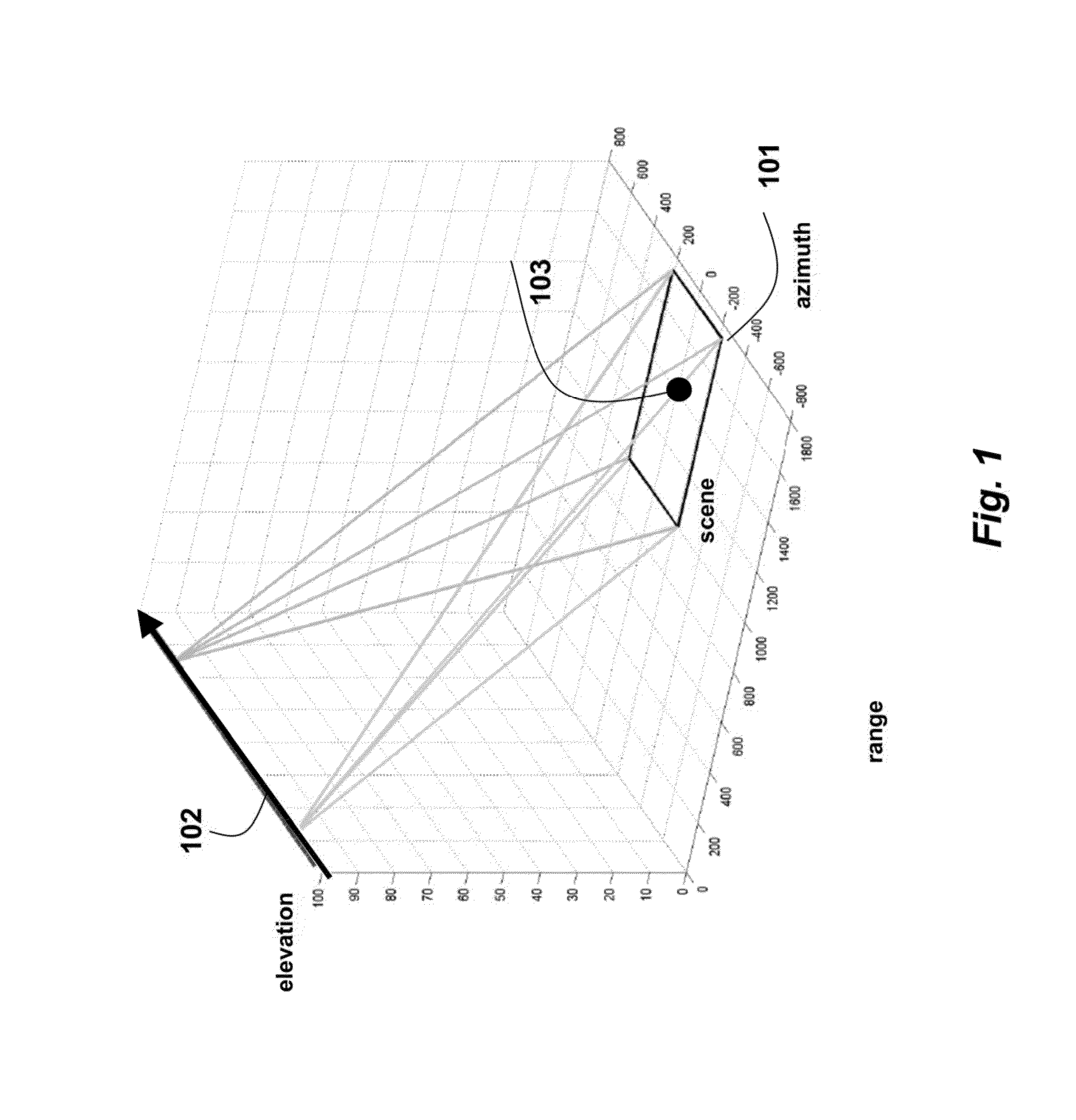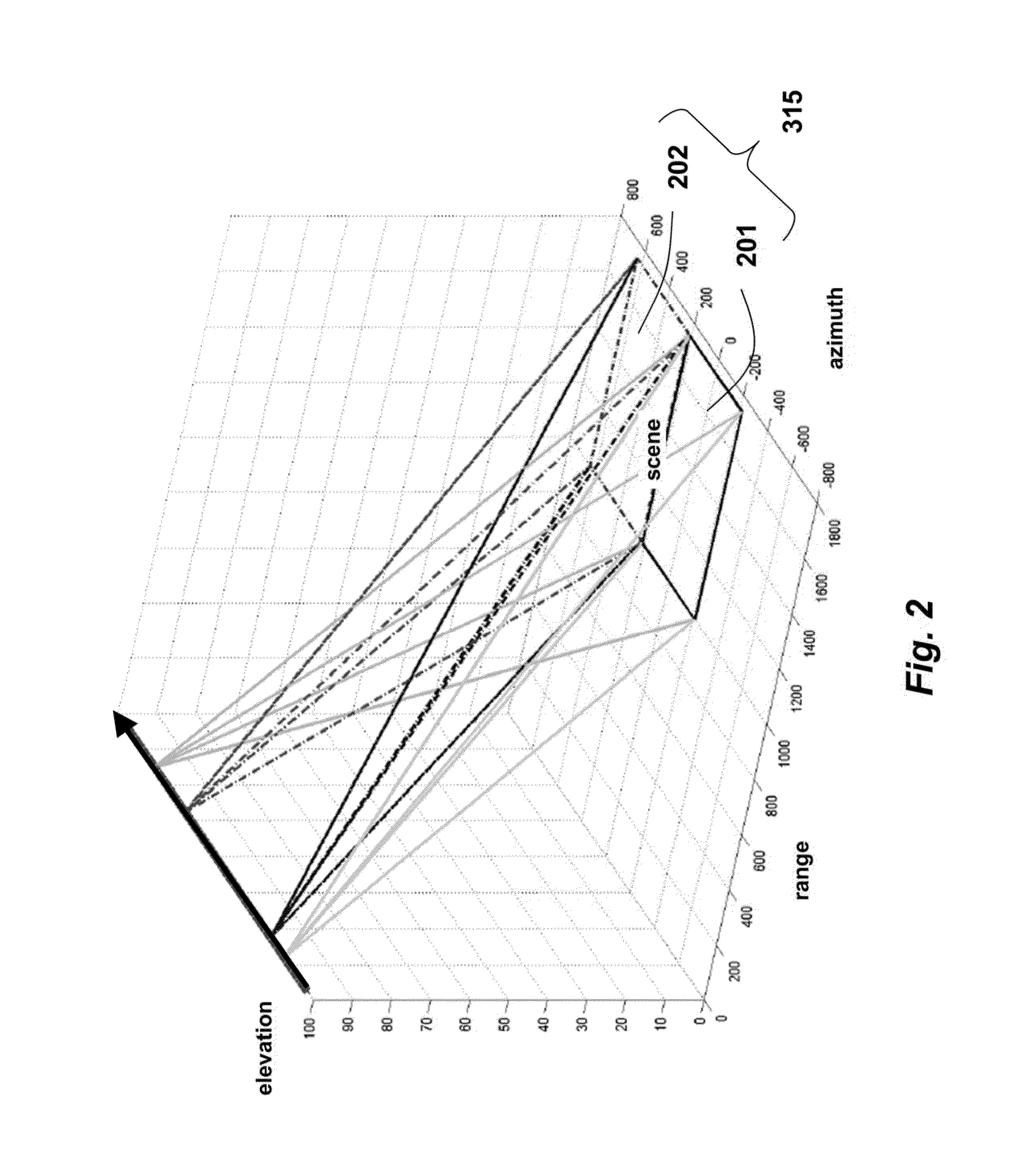System and Method for Multiple Spotlight Synthetic Radar Imaging Using Random Beam Steering
a technology of random beam steering and synthetic radar, applied in the field of synthetic aperture radar (sar) imaging, can solve the problem of computational complexity of inversion, and achieve the effect of double coverag
- Summary
- Abstract
- Description
- Claims
- Application Information
AI Technical Summary
Benefits of technology
Problems solved by technology
Method used
Image
Examples
Embodiment Construction
Randomly Steerable Spotlight Array
[0019]As shown in an example in FIG. 2, the embodiments of the invention provide a method and system for a random steerable spotlight synthetic aperture radar (SAR) system. Our randomly steerable array also uniformly transmits pulses and receives signals, also known as echoes or reflections having a complex waveform when compared to the pulses. Our array increases the flexibility of the beam steering.
[0020]As shown in an example in FIG. 2, instead of steering the beam of pulses always at the same area, we illuminate a set of at least two areas 201-202 in a scene 315. Each area has about the same size as the single area in the conventional system shown in FIG. 1. The example shows that illuminating two areas results in illuminating an area of doubled size. As used herein the set includes at least two areas. The location and shape of the areas is arbitrary, depending, for example, on a structure of the antenna. Here for simplicity, we use rectangular ...
PUM
 Login to View More
Login to View More Abstract
Description
Claims
Application Information
 Login to View More
Login to View More - R&D
- Intellectual Property
- Life Sciences
- Materials
- Tech Scout
- Unparalleled Data Quality
- Higher Quality Content
- 60% Fewer Hallucinations
Browse by: Latest US Patents, China's latest patents, Technical Efficacy Thesaurus, Application Domain, Technology Topic, Popular Technical Reports.
© 2025 PatSnap. All rights reserved.Legal|Privacy policy|Modern Slavery Act Transparency Statement|Sitemap|About US| Contact US: help@patsnap.com



